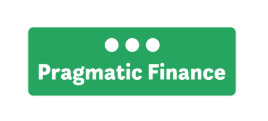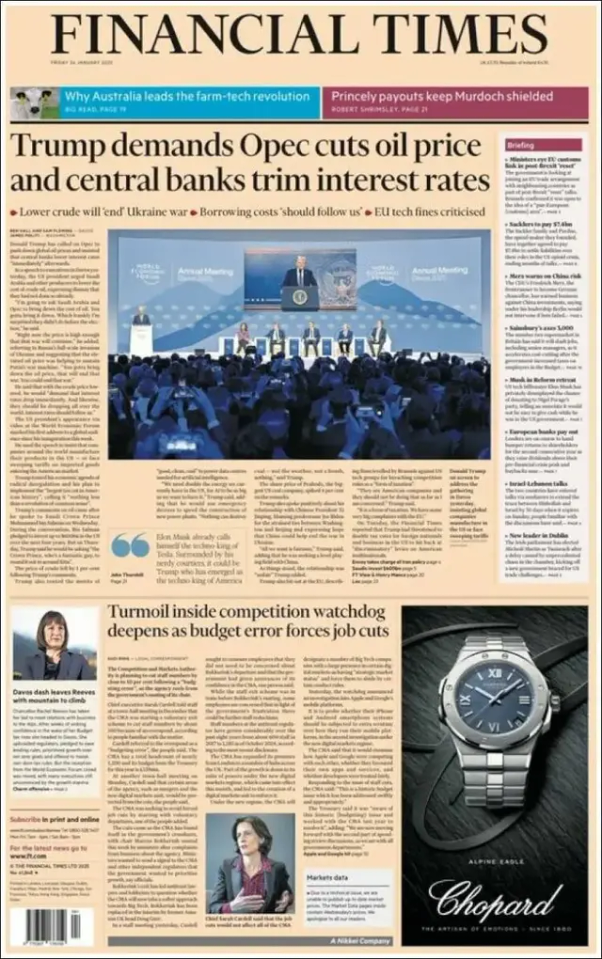#Competitive Interest Rates
Explore tagged Tumblr posts
Text
Unlock Funding with Pragmatic Finance Loans


Need a boost for your business? Pragmatic Finance offers small business term loans that deliver quick and reliable funding. Whether you're expanding, buying equipment, or managing cash flow, our loans are designed to help your business thrive. Tailored to your needs, our flexible repayment terms make financing easier than ever.
Why Pragmatic Finance Beats the Rest!
Why settle for less when you can choose Pragmatic Finance? Here's what sets us apart:
Custom Terms – Repayment plans that suit you.
Fast Funds – Get your money quickly.
Low Rates – Affordable interest rates.
No Hidden Fees – Clear, transparent lending.
What’s a Small Business Term Loan?
A small business term loan is a lump-sum loan provided with a fixed repayment schedule. Used for everything from growth to equipment purchases, these loans give you the flexibility to manage your cash flow while meeting your business goals.
The Perks of Pragmatic Finance Loans
Fast Funding: Get the cash you need fast.
Easy Repayments: Fixed repayment schedules for smooth budgeting.
Fuel Your Growth: Invest in expansion and new projects.
Better Cash Flow: Keep your operations running smoothly.
No Sneaky Fees: What you see is what you get.
How to Get Your Loan with Pragmatic Finance
Fill Out the Form: Start by completing the online application.
Submit Your Docs: Upload your financial documents.
Receive Your Funds: Get approved and have funds in your account quickly.
Ready to Grow? Apply Now!
Don’t wait to take your business to the next level. Visit Pragmatic Finance to apply for your small business loan today!
#pragmatic finance small business term loans#Small business financing#Business loan terms#Flexible loan options#Working capital loan#Quick business funding#Cash flow solutions#Equipment financing#Business expansion loan#Affordable business loans#Loan repayment terms#Short-term business loans#Transparent business loans#Small business funding options#Easy business loan application#Competitive interest rates
0 notes
Text
MyFastBroker: No.1 Trusted Mortgage Broker for Quick Financing Solutions
Hey today we Discover quick and secure home financing with MyFastBroker. They securing the right loan, mortgage, or trading platform can feel like a daunting maze. Whether you’re a first-time homebuyer, an investor chasing financial goals, or someone seeking financing for a big purchase, the process can be overwhelming. That’s where MyFastBroker steps in—a trusted name that simplifies everything…
#best rates#borrower support#broker reviews#broker services#business financing#choosing a broker#Competitive Interest Rates#educational resources#expert guidance#fast results#financial goals#financial needs#financial solutions#financing#first-time homebuyer#home financing#home purchase loans#investment strategies#lender network#loan brokers#loan terms#low fees#mortgage broker#mortgage process#mortgage solutions#MyFastBroker#MyFastBroker.com#online brokerage#personal loan#personalized service
1 note
·
View note
Text
Access Bank’s Digital Loan Platform ‘QuickBucks’ Disburses N740bn in 7 Years
Access Bank has revamped its digital loan platform, QuickBucks, to enhance lending services for Nigerian consumers. The platform offers various loan options, including business loans, vehicle financing, and school fees payment. Since its introduction in 2017, QuickBucks has disbursed over N740 billion in digital loans to 18 million customers, with loan amounts ranging from N10,000 to N10…
#Access Bank#Competitive Interest Rates#Customer Support#Digital Loans#Financial Freedom#FinTech Innovations#Flexible Repayment#Loan Options#Nigerian Consumers#QuickBucks#Touchaheart.com.ng
0 notes
Text
Actually I have a post I want to make about Property Value.
Which is a topic that comes up a lot in discussions of rich people hoarding wealth, in NIMBY panics, and in the ever-increasing prices of homes. But I don't think we talk much about how the perniciousness of property value goes deeper and basically holds middle class people who own a home hostage.
So to set some context here: in 2025 the median US home sold for $416,000. Say you have a working class family who can't meet median, but who scraped and saved and penny-pinched their way to a $300,000 home.
Typically, when buying a first home, you pay 20% down directly, and take 80% out as a mortgage from the bank. For this family, that means $60,000 of their liquid money (and let's say it took them 10-15 years to save that amount), and a $240,000 loan from the bank.
That's $240,000 in debt the family is. Which will be repaid over 30 years, with interest, at a rate that usually means for the lifetime of the loan, they end up paying back double the original loan.
However this massive $240,000 debt is generally considered "okay" debt to have, because it's backed by the house. If things go truly sour, the bank can take the house (and what's a little homelessness between friends).
That $60,000 the family put down is considered equity, and equity is money you "have", but isn't accessible.
Scenario: Now let's say something happens. Someone in the family loses their job, and the only job they can find requires moving. Or a family member across the country can't care for themselves anymore and so this family needs to move to be closer to them. The family gets divorced. Someone in the family is allergic to material in the home. Someone in the family is being stalked or abused and needs to leave the town. Anything at all, which would require selling the home and moving.
Case 1: The family is able to sell it for exactly what they paid (same property value, no increase or decrease). You would think the math is clean. They are paid $300,000 for the house. $240,000 repays the bank loan. The remaining $60,000 of equity goes right back to them. And they can use it (which took 10+ years to save up) to move across the country and buy a different $300,000 house.
Except no, it does not work like that.
The seller of a home is on the hook to pay commission to their realtor and the buyer's realtor. This is usually ~6% of the home value. They have to pay legal costs. There are taxes. There are miscellaneous costs. It can easily be 6-9% of the selling price of the house.
The bank NEEDS its $240,000 back. So those costs come from the equity. This family is not getting their $60,000 back. They're getting $30,000-$45,000, and now no longer enough money for a downpayment in their move. They're back to renting. Back to penny pinching. They can get by, but homeownership is now out of their grasp once more. Maybe in another 5 years, they'll have enough (unless home prices have increased too much by then) then they'll maybe never be homeowners again.
Case 2: The property value has DECREASED... Family is only getting offers in the $260,000 range.
If the family accepts a $260,000 sale, well $240,000 goes to the bank. This is genuinely non-negotiable. And that leaves.... maybe not enough money to even close on the house. Not enough to pay the realtors and the fees.
That $60,000 is wiped out, and the family is incapable of moving. Never mind losing 10+ years of savings--they're below $0. They don't have the money to close. It's financially impossible to sell. They are stuck with the mortgage. They are stuck with the house. (Maybe they'll rent it, if they can. And now they're landlords by circumstance, which is often NOT profitable when you're not a trust fund baby renting out a totally-paid-for no-mortgage home.) But whatever the case, they cannot sell it. And if the reason for selling was a job loss... well, they can be homeless soon. And if the property value dropped below $240,000, they can be homeless AND owe a bank debt. A $60,000 nest egg wiped completely out, with a bank debt owed on top of that.
So how do people avoid financial destitution when moving?
The most sensible answer is building up equity by paying down the loan--but it's important to know that mortgages are super interest heavy in the early life of the loan. With a 5% interest rate (BETTER, btw, than current rates) this family would be paying $15,460 the first year, and only $3,540.88 is actually chipping at that $240,000 principle. The other $11,919.59 was pure interest to the bank.
So after 1 year, the family went from having $60,000 equity in the house to $63,540.88 equity in the house. This buys a little extra wiggle room when juggling closing costs. But not very much. Even after 3 years, the family has just a little over $70,000 of equity, and just under $230,000 still left on the loan. So if the family has to move for any reason (sickness! death! job loss!) in those 3 years, it's probably financially devastating.
But there is a second answer to avoiding financial ruin: and that is Property Value going up.
Any amount of property value increase is PURE equity. The bank only cares about the amount of money it gave you. If after 3 years, that house is now worth (and can sell for) $315,000 (which is appreciation of only 1.6% a year. Most home appreciation is closer to 3%), that's more equity increase than they got from 36 diligent months of mortgage payment.
If they can sell for $315,000, pay $230,000 of that to the bank, that leaves $85,000. $25,000 goes to paying the realtors and the closing costs and.... the family is back to their $60,000 downpayment. Not trapped. Able to sell. Able to buy a new $300,000 home in the place they moved. Able to just maintain homeownership status.
But wait, if their home appreciated to $315,000, didn't all the other homes do the same, so now $60,000 isn't enough
Smart eye, lad! You've identified why this is a TERRIBLE rat race for the people scraping money together to live, and is ONLY a profitable leisure activity for rich people who sell homes like collectables.
Now because the increase is pure equity, a similar family with decent property value increase can funnel that extra equity into affording to meet the new higher down payment (remember the downpayment is only 20%, so even if the new place is similarly higher in property value, you only need to match that increase 20% for the downpayment). Which gets their foot in the door. But now their new mortgage is higher than the old one. More expensive. More interest.
But there is a losing scenario here--if home property values increased everywhere else, but not where you live. Then this family is back to surrendering homeownership. Because even if they can sell their place, they can't buy the next home.
It forces them to care about their own Property Value increase because, if it doesn't increase while everywhere else does, it traps them.
So what do I mean by all this
If the value of all homes dropped 50% overnight, I assume most people here would celebrate. Affordable homes! Rich people upset and crying! So much to love.
But in reality, that 50% drop would likely continue to mean no home for most of us, because the people who could sell you the homes would be financially incapable.
For the family above with the $240,000 mortgage, that mortgage does not reach halfway-paid-off until year 20 of the 30 year mortgage (remember the interest frontloading). If a family still owes $230,000 in bank loans on a place that can only sell for $150,000, they can't sell it to you. That house is the bank's collateral securing the loan. Their mortgage is underwater. They're trapped. They cannot sell it. You cannot have it.
Something similar happened in the 2008 subprime mortgage crisis, and the only people who got out okay were ones who could stay the course, keep making the mortgage payments, and wait it out long enough for property value to recover.
Those who couldn't got foreclosed on. Those who couldn't were left in financial devastation.
So in conclusion?
Banks profit off of mortgages. Rich people profit off of hoarding housing stock and selling it as the property value increases. Real estate companies profit off of home sales. And the regular people, who managed to achieve home ownership, are shackled to the price-go-up system to avoid financial ruin. They're forced to care about their property value because it is the singular determinant of whether they're trapped in place, whether they'll be okay if they lose their job, whether they could move due to an important life event.
It's a profit system for the rich where the cogs are middle class people who could achieve homeownership, running a machine where every single crank locks the poorer and younger generations out of home ownership forever.
#on my next installment: how rising mortgage interest rates trap people in the exact same way!#how low mortgage rates BALLOONED home prices due to more people able to make competitive offers and how the following interest rate hikes#left prices massive AND new mortgages unaffordable and so many new people locked out of ownership forever#while trapping current owners in place because they could never afford a new mortgage at modern rates#chrissy speaks
4K notes
·
View notes
Text
In the world of financial solutions, finding the right partner can make all the difference. Capified is here to offer you a seamless and efficient way to secure a loan against property through private finance. With our expertise, you can unlock the hidden potential of your property to meet your financial needs.
Why Choose a Loan Against Property?
A loan against property (LAP) is a secured loan where your residential or commercial property is used as collateral. This type of loan offers several advantages:
Lower Interest Rates: Since the loan is secured against your property, lenders are willing to offer lower interest rates compared to unsecured loans.
High Loan Amount: You can avail of a higher loan amount based on the value of your property.
Flexible Tenure: LAPs usually come with longer repayment periods, providing you with the flexibility to repay at your convenience.
Versatility: The funds can be used for various purposes, such as business expansion, medical expenses, education, or even personal requirements.
Capified’s Private Finance Solutions
At Capified, we understand that traditional banking channels might not always be the best fit for everyone. Our private finance solutions for LAP are designed to cater to those who need quick, flexible, and customized financial assistance. Here’s why Capified stands out:
Speedy Approvals: We prioritize quick processing and approvals, ensuring you get access to funds when you need them the most.
Personalized Service: Our team of financial experts provides tailored solutions to match your unique financial requirements.
Minimal Documentation: We strive to make the process as smooth as possible with minimal paperwork and hassle-free procedures.
Competitive Interest Rates: Capified offers attractive interest rates that are competitive and designed to make repayment manageable.
Transparency and Trust: We believe in maintaining complete transparency with our clients. There are no hidden charges, and all terms and conditions are clearly outlined.
How It Works
Securing a loan against property with Capified is a straightforward process:
Property Evaluation: Our team will assess the market value of your property to determine the loan amount you are eligible for.
Application Process: Fill out a simple application form and submit the necessary documents.
Approval and Disbursement: Once your application is approved, we will disburse the loan amount directly to your account.
Your Partner in Financial Growth
Capified is more than just a lender; we are your partners in financial growth. We understand that every individual’s financial needs are different, and we are committed to providing solutions that are best suited to your situation. Whether you are looking to expand your business, cover personal expenses, or invest in new opportunities, a loan against property through private finance with Capified can help you achieve your goals.
Contact Us Today
Unlock the potential of your property and secure your financial future with Capified. Contact us today to learn more about our loan against property private finance solutions and take the first step towards achieving your financial aspirations.
READ MORE.....Cash Against Property Loan Against Property in Delhi Gurgaon Noida - Capified
#Competitive Interest Rates#Customized Loan Solutions#Transparent Loan Process#Personal Expense Loan
0 notes
Text
Discover a wide range of personal loan options and financial solutions at LoansMee. Whether you have good or bad credit, find the best loan terms tailored to your needs. Visit LoansMee Blog page to explore competitive interest rates, flexible repayment plans, and expert advice to guide you through the borrowing process.
#Personal loans#Financial solutions#Loan options#Good credit loans#Bad credit loans#Competitive interest rates#Flexible repayment plans#Loan terms#Borrowing process#LoansMee#Expert financial advice#Unsecured loans#Best loan terms#Credit score impact on loans
0 notes
Text
Unlock Financial Opportunities with Prefr Loans – A Comprehensive Guide
Unlocking Financial Opportunities: A Deep Dive into Prefr Loans In the ever-evolving realm of financial services, Prefr stands tall as a reliable and accessible provider of credit solutions. Let’s embark on a comprehensive journey to explore the various facets of Prefr loans, understanding why this NBFC (Non-Banking Financial Company) is not just a lender but a financial ally. Prefr Loans: A…

View On WordPress
#Prefr Loans#NBFC#Salaried Professionals#Self-Employed Entrepreneurs#Loan Flexibility#Repayment Tenure#Competitive Interest Rates#Transparent Processing Fee#Net Take-Home#Age Criteria#Digital Process#Responsible Borrowing#Credit Solutions#Prefr Features#Financial Solutions#Financial Empowerment#cibil score#personal finance#Financial Inclusion#loan application
0 notes
Text
Transform your home with SRG Housing Finance Ltd.

Transform your home with SRG Housing Finance Ltd.'s Repair, Renovation & Extension Loan. Upgrade your space to match your lifestyle, with competitive rates and seamless service. Your trusted partner in enhancing your home's comfort and style.
#Home Renovation Loan#House Extension Financing#srg housing finance#Home Improvement Loan#Repair & Extension Loan#Renovation Financing#SRG Loan Services#Home Upgrade Financing#Personalized Home Loans#Competitive Interest Rates
0 notes
Text
JAZZPROWL FIC RECS PLS?
I have read a LOT of JazzProwl fics in my three years hyperfixating on Transformers (kind of have to with J/P being 90% of fics where Jazz gets any relevancy), but I come to you all with a beseeching plea.
Where are the JazzProwl fics where Jazz is the one being courted and sought after as Prowl is pursuing him? Where is the JazzProwl content where Prowl is openly affectionate and loving, even if awkward about it? The fics where it's reciprocal behavior for them, or even just Prowl being the primary pursuer the relationship?
I like JazzProwl!! But I feel like there has to be more content with Prowl being proactive and invested than I've been finding lately. There's got to be more where it's not Jazz doing majority of the work to have a functioning (if not always healthy) relationship. More fics and art of Jazz being shown love by Prowl and not Jazz always being the affectionate one while Prowl is just flustered/blushing/being publicly stoic/etc. Give me fics of Jazz being the one who gets the love and affection and not always having to work overtime to "earn" it by proving his worth to Prowl (or everyone being like "Prowl manage your mech" like Jazz is a fucking toddler drawing on the walls).
I'm not even going to list fics I've already read that I remember because I want everything ya got. Who knows, maybe I binged it too fast the first time I read it, and I could give it another go. I don't really do bookmarks on AO3, so my life is a roulette wheel of remembering how many fics I've already read, but it's been a loooooot.
I will say I rarely ever read anything under 1k words. I can't taste a bite that small.
(I will also plead for accept recs of them being utter gremlins to each other and yet somehow working out, I love that dynamic with them.)
#fic rec request#jazzprowl#transformers#maccadam#fanfic recs#tf jazz#tf prowl#autobot jazz appreciation in this house#any rating is cool by me#just warn me in the rec so i know what to expect!#also no perma-death fics#not here for killing my faves#any continuity#i'm here for it#i need jazz getting shown more love than a twitch of a doorwing and a “good job” when he's back from a mission#you know who wouldn't stand for this#earthspark prowl#where are the earthspark prowl/jazz fics#that mech would make showing affection a competition#he'd blatantly stalk jazz to find out his interests and make some awkward joke about it will 100% confidence that it landed#earthspark prowl my dorky social friendly petty darling#he'd try to learn to play an instrument fail terribly and know it but go through with the entire song just because and jazz would listen#es prowl would go for it and not turn back if your his target he's getting that ass#romantically
70 notes
·
View notes
Text
So the book club that I've been in since 2022 has 9 regular members now including me, and we have collectively read a total of 28 books together now. This month we put all of our book choices and the members' ratings of the books on an Excel spreadsheet, and have been having fun figuring out various trends and statistics and so on – what decades we have mostly read from, what countries, what genres, what our most and least highly rated picks were for each year, etc. I also thought it would be fun to use the spreadsheet on my own to figure out who rates things most and least similarly to each other in the club. What shocked me was that I found out that I scored the number one most similar/compatible rater to every single other person in the club except two (I was 2nd most similar rater for somebody and 4th most similar rater for the other). Also, apparently me and the guy who I scored least compatible with based on our ratings/taste have the top rated book selections on average in the club so far. I'm not at all sure what this means except that I just know from now on I'm going to have this secret semi-subconscious goal in my mind of inching my way higher in this one outlier book club member's taste compatibility scoring for 2025 hahaha
#not like in a 'im going to change my ratings or book selections intentionally to do so' way#just like in a 'im going to be paying closer attention to this from now on and watching it with interest' sort of way#because there's nothing i love more than setting myself dumb secret challenges and experiments#this book club member also scored as the member with the most unpredictable ratings i think?#you just never know what he's gonna think of something which makes it interesting i suppose#like for example when i was being really harsh on study for obedience he ended up rating it 4 stars#also there are SO many questions in my mind about why i am most compatible with 6 out of 8 of the members there rn#like is it mostly because of me or them or just a mix of both#i plotted our ratings out on a line for each book and saw that very often i tend to be in the middling upper portion of the ratings we give#like im almost never the one giving it the highest rating of all but im also usually more generous with the stars i give than the others#and ive never given the lowest rating in the group of all on any book either#so is it just like not being too extreme but also slightly more positive with your ratings leads to being most likely to match others?#i think it must also depend on how other people are rating them. like are they using other people's ratings to decide their own or not#i tend to try to just rate the books based purely on my own taste and regardless of what the others thought#but idk about everybody else#also im glad that i think most of us are also trying to be fair like we will rate our own books low if we genuinely didn't enjoy them too#ALSO AT THE END OF THE DAY book club is definitely about more than just slapping a star rating on a book#and the star rating sometimes has little to do with how great a book club discussion you'll get out of it#but i still think we're having a friendly competition over trying to get the highest ratings from the others#idk sorry this is how i actually have fun hahaha like this is my team sports#another weird stat i found interesting was that i have given out an average of 3.15 stars to the books#and my selections for the club have been rated an average of 3.14 stars by the group#i was the only member to have these numbers be so close together as well#p
6 notes
·
View notes
Text
Brookfield Raises $16B to Snatch Up Distressed CRE at 40% Discounts Nationwide

Key Takeaways Brookfield has raised a massive $16 billion fund to acquire distressed U.S. commercial real estate assets at discounts as deep as 40% off their peak values. The commercial real estate market is under severe stress, with nearly $950 billion in loans coming due and a surge in defaults across major sectors and cities. Competition for distressed deals is fierce, with major players like Blackstone in the fray, fueling aggressive strategies and high-stakes battles for prime properties. Brookfield just unleashed a $16 billion tsunami across U.S. commercial real estate. Distressed properties are dropping 40% in value, and institutional titans are scrambling to grab them first. Will individual investors be left in the dust, or finally seize their chance to play the big game? Here’s what you’ll uncover in this urgent report: Why Brookfield’s fund is reshaping the entire commercial landscape—from warehouses to apartments. Which U.S. markets are flashing “Buy Now” signals before prices rebound. How smart investors are using distressed loans, deep discounts, and lease-up strategies to dominate 2025. Let’s break down the chaos and pinpoint your profit strategy in this shifting battlefield. Shifting Dynamics in Commercial Real Estate A wave of turmoil slams into U.S. commercial real estate as Brookfield assembles a stunning $16 billion fund, seeking distressed assets at Manhattan-sized discounts—up to 40% below peak value. Apartments, warehouses, and non-performing loans in cities from Dallas to the Golden Gate are now battlegrounds for survival. Lenders face $950 billion in maturing loans, defaults rise, and fierce competition from giants like Blackstone intensifies the race. More shocking numbers and high-stakes strategies are just ahead. Record-Breaking Fund: Details of Brookfield’s $16 Billion Raise A seismic shift is shaking the skyline from Wall Street to the Financial District: Brookfield Asset Management has shattered records, amassing a $16 billion war chest for its latest real estate fund. This is the largest fund in Brookfield’s storied history, dwarfing earlier efforts and signaling peril—and opportunity—throughout U.S. commercial real estate. The $5.9 billion raised in just the first quarter of 2025 demonstrates a surge in investor urgency, with total commitments far surpassing expectations. Fee-related earnings also hit $698 million, representing a 26% YoY increase as Brookfield’s diverse business lines drive profitability in tandem with new capital inflows. How can such a massive influx of capital reshape the terrain around landmarks like the Brooklyn Bridge and beyond? The fund will aggressively target apartment buildings and warehouses, eyeing up to 40% discounts, while eyeing integration with urban farming and renewable energy initiatives to maximize value and resilience. Brookfield’s total raised across all funds now at $16 billion marks the sector’s largest capital pool ever, bolstering its ability to shape distressed asset deals on an unprecedented scale. What happens when capital seeks shelter in inflation-resistant assets as skyscrapers in lower Manhattan struggle with vacancies and uncertainty? Brookfield’s scale and speed expose the risks—and the stakes—for those unprepared for these dramatic market shifts. Distressed CRE: Why Opportunistic Investors Are Stepping In Now Smoke still rises along the Hudson as vacancy rates climb in Manhattan skyscrapers, sending shockwaves through neighborhoods from SoHo to DUMBO. Offices around the Flatiron and World Trade blur into opportunity as distressed commercial real estate deepens, creating cracks in the city’s financial heart. Why are opportunistic investors moving at this moment? The answer lies in plunging values—distressed assets now trade at discounts up to 40%, with savvy firms racing to secure prime properties before the dust settles. Many successful investors focus on asset accumulation before luxury spending, taking a long-term
approach to wealth that emphasizes building a financial foundation before seeking short-term gains. Risk looms from expiring loans and rising natural disasters, but market momentum is expected as future interest rate cuts promise increased liquidity and easier access to capital. Heightened scrutiny from lenders and regulators may follow in the wake of institutional trust concerns sparked by recent allegations of mortgage fraud at high-profile levels. Visionary investors eye urban renewal, turning abandoned towers into eco-friendly buildings, leveraging public-private deals and streamlined financing. As Grand Central’s facade reflects empty offices, optimism persists that the city’s scars could propel transformation, but complacency carries danger when timing and bold action are everything. Amidst these challenges, some investors are focusing on diversifying into different markets to reduce risk exposure and capitalize on appreciation trends observed in high-demand destinations. Targeted Asset Classes: Apartments, Warehouses, and Non-Performing Loans Headlines echo across Manhattan: discounted apartments and single-family rentals present rare chances as pricing cracks widen. Fierce headwinds batter the multifamily sector, while opportunistic funds race to capitalize on distress in every borough—from SoHo lofts to Queens towers. Will investors act fast enough, or will New York’s next great real estate fortune pass them by? Multifamily and SFR Opportunities Beneath the shadow of San Francisco’s crumbling Millennium Tower, the scenery of distressed commercial real estate is shifting at a breakneck pace. Why are investors stampeding into discounted apartments and SFRs near landmarks like the Painted Ladies? Technology innovation accelerates underwriting and deal execution, while regulatory changes in rent control create fierce uncertainties. Deep discounts appear on multifamily assets, with Brookfield targeting thousands of distressed loans tied to local apartment blocks. San Francisco’s duplexes and condos, shaped by tech-fueled demand swings, face ownership shakeups. Single-family rentals surge in popularity, but distress remains rare, forcing investors to compete on edge. Can non-performing loans locked against Mission District apartments be unraveled profitably? Liquidity is thin, risks are high, but recovery is possible. Disaster looms—and only decisive action will secure returns. Industrial and Warehouse Expansion Under the looming cranes of Oakland’s port, warehouse and industrial assets now stand as the final safe harbors in a market beset by chaos. Industrial innovation and warehouse logistics have become survival tools, not strategic luxuries. Recent quarters show Brookfield targeting assets from Dallas-Fort Worth to the Inland Empire, seizing on surging investor demand for logistics properties with irreplaceable supply chain links. Where will safety be found if industrial demand falters? Occupancy is fueled by transportation, logistics, and infrastructure tenants, with a weighted average lease term of 5.5 years tempering rollover risk. Sales and acquisitions span 131-acre land banks and 631,604 SF IOS portfolios, testimony to the fierce competition for resilient industrial assets. Can investors risk ignoring the warehouse revolution seen at the Golden Gate’s edge? Inside Recent Acquisitions: Multifamily and European Logistics Deals A seismic shift is shaking the Bay Area as Brookfield takes control of San Francisco apartment towers, shadowed by headlines of spiking delinquencies and mounting loan maturities. Across the Atlantic, the firm is capturing prized logistics sites around Rotterdam and Hamburg, locking in long-term potential amid escalating e-commerce demand. Could distressed loan sales from banks on London’s Canary Wharf really give buyers the edge, or will fierce competition shut them out? What risks lurk for investors as fundamental cracks spread beneath the surface of these so-called blue-chip assets?
San Francisco Apartment Takeover Brookfield surged to the city’s largest landlord after snapping up 2,000+ units in a distressed fire sale, dethroning Veritas right beneath the shadow of City Hall. Foreclosures crept through neighborhoods like North Beach as Veritas’ collapse, triggered by $915 million in defaulted loans, unleashed a rapid transfer of once-stable homes. Deep discounts—reflecting a 10-20% market slump—set the stage for massive landlord consolidation just as rent control suffocates profits. Could further regulatory crackdowns and slow recovery leave even the boldest players exposed in the Tenderloin? Legal and financial risks mount as Brookfield’s grip tightens. European Warehousing Portfolio Purchase Tremors from San Francisco’s housing shakeup hadn’t even settled near the Ferry Building before fresh warning bells rang across the Atlantic. Brookfield, already notorious along the Golden Gate for swift deals, launched a dramatic push into Europe, seizing Tritax EuroBox’s warehousing empire for £1,102 million. Questions flood the continent: Can cultural preservation survive as logistics giants redraw ancient city limits? With assets stretching from Berlin’s Brandenburg Gate to Barcelona’s Sagrada Família, local regulations are now in the crosshairs, putting compliance and community trust at stake. A snapshot of Brookfield’s moves: Country Portfolio Size Major Client Germany 4.1M sqft Puma Spain 1.5M sqft Mango Netherlands 2M sqft Rhenus Italy 1M sqft Various Sweden 1.4M sqft LogisticsCo Leveraging Distressed Loan Opportunities Even as winds shift across MoMA’s shadowed streets and global markets brace for upheaval, billions in commercial real estate debt hang like a sword over the industry. These debts are maturing between 2025 and 2028. Banks are pulling out, leaving private lenders like Brookfield to snap up distressed loans at discounts—many near Times Square fear being left behind. How can investors adapt to drastic debt maturities while ensuring legal compliance? Brookfield targets multifamily loans, leveraging tech innovation for rapid analysis of distressed portfolios experiencing rising delinquencies. Strategic renovation and rental optimization turn distressed Manhattan properties into long-term cash flows. Creative financing and rigorous legal compliance attract prime assets while limiting risk across boroughs. Will pressure from Wall Street’s heavy hitters force a race for fewer discounted deals? Portfolio diversification remains essential in an environment pulsing with volatility. Discounted Valuations: Capitalizing on a 40% Price Correction A seismic 40% correction now haunts commercial real estate valuations from San Francisco’s Embarcadero to Manhattan’s skyline. Deep discounts ripple across urban corridors, shaping investor sentiment with chilling urgency. Will investors lose their chance to capitalize on these rare discounted valuations? Capitals like Chicago’s Loop and Dallas’s Uptown stand as battlegrounds for opportunity giants. As policies shift and regulatory uncertainty hangs in the air, the clock ticks for those seeking distressed assets. Massive capital reserves—Brookfield’s $16 billion war chest—underscore the scale of the moment. Office towers in Boston, logistics hubs near L.A. ports, and retail on South Beach now draw scrutiny. Urban redevelopment now demands rapid technology integration, as survival trumps tradition. Market volatility remains, while strong multifamily demand near 2021 highs offers isolated refuge. Are investors prepared to act before deep-pocketed rivals seize this window? Interest rate cuts add fuel to the scramble, but delays could mean missing generational returns in real estate’s impending reset. Deployment Strategy: How Brookfield Is Moving Fast in 2025 Brookfield has unleashed a relentless wave of capital across Miami’s skyline, moving with unprecedented speed as $25 billion floods deal pipelines and distressed opportunities in Q1 2025 alone.
Their strategy is cold and calculated, targeting CRE loan portfolios and Sun Belt assets while shockwaves from regional bank turmoil still echo through Brickell. How is Brookfield’s lightning-fast deployment pace forcing local players to react, and what risks emerge as they scoop up discounted assets before the dust settles? Rapid Capital Deployment Pace How quickly can the ground shift beneath Times Square’s towers in a volatile market? Can investors afford to be unprepared as the city topography transforms overnight? In 2025, Brookfield’s $9.2 billion capital surge hit the market with intensity, exploiting Manhattan’s deep discounts and market chaos. Their rapid commitment pace weaves through sectors like energy infrastructure in Hell’s Kitchen and green tech initiatives in Battery Park. Strategic real estate taxation gains sharpen the edge, boosting the Industrials segment with a $72 million tax benefit and solid urban planning execution. A flexible strategy means shifting assets—selling non-core properties in Midtown, redirecting capital into high-octane sectors. Opportunistic credit infusions stabilize portfolios against regulatory tremors. Brookfield’s war chest, fueled by $120 billion in dry powder, targets discounted opportunities and employs both private and public market entry points. Will you be ready before the dust settles on Fifth Avenue? Strategic Distressed Asset Sourcing Steel shadows stretch across Bryant Park as seasoned investors confront a new—and unforgiving—reality. The race to source strategic distressed assets has intensified, driven by technological innovation and sharp regulatory changes gripping Manhattan and far beyond. Vital questions at hand: How does Brookfield avoid catastrophic losses in volatile markets? Which assets evade disaster as others fall into distress? What signals spell opportunity amid federal scrutiny and liquidity droughts? Can outdated strategies survive shifting global regulations? Target Asset Type Leveraged Tactic Regional Focus Mismanaged Logistics Hubs Tech-enabled Due Diligence India, Japan, Australia Performing Bank Loans Standardized Underwriting Major U.S. cities Rent-Stabilized Multifamily Regulatory Compliance Filters Urban Northeast Non-Recourse Debt Pools Early-Stage Restructuring Teams Sunbelt, Midwest Every misstep risks annihilation of returns as looming regulatory changes and advanced data tools reshape the battlefield. CRE Debt Crisis: Exploiting Maturities and Lender Pressure An avalanche of nearly $950 billion in commercial mortgages will mature within the next year, threatening to turn Manhattan’s skyline from iconic asset to looming liability. Lenders in Midtown and across the nation brace for a tidal wave of refinancing demands under rising interest rates. What happens when borrowers can’t meet these higher debt service payments? Distress is accelerating as declining property values, driven by surging vacancy rates and remote work trends, collide with regulatory scrutiny and insufficient lender reserves. Lenders facing defaults near the Chrysler Building are pressured to extend terms, but such concessions are only temporary lifelines. Borrowers strain under increased costs and slumping revenue, while higher cap rates forecast further devaluation in 2025. Could this ticking clock ripple outwards into a systemic threat, freezing CRE investment and accelerating financial fallout? Opportunists target properties lacking digital transformation or green building upgrades, intensifying pressure on underperformers. Central Park’s skyline could soon hide the scars of a crisis few are prepared to withstand. Competition Among Giants: Comparing Fund Size and Market Approach A race for dominance is underway as Wall Street titans, armed with war chests surpassing the value of skyscrapers on Madison Avenue, set their sights on discounted commercial real estate. Funding is colossal—Brookfield’s $16 billion fund shadows Blackstone’s
$8 billion BREDS V, each shaping the fate of distressed assets across cities like Chicago’s Loop and L.A.’s Miracle Mile. How do these giants use sheer capital and strategy to drive Urban Renewal and Tech Integration at unprecedented scales? Their competition intensifies market volatility. Pressure mounts across core markets, with immense buying power threatening to reshape prices overnight. Brookfield’s massive fund blitz enables deep Urban Renewal campaigns in neglected districts. Blackstone’s thematic approach emphasizes Tech Integration within adaptive reuse projects. Diversified sector targets, including industrial and multifamily, accelerate shifts away from outdated office space. Market alliances and strategic partnerships boost acquisition capabilities, rewriting local market rules. Real-time performance metrics force constant recalibration, leaving less agile firms vulnerable. The contest for distressed CRE now consumes America’s cityscape. Portfolio Positioning: Limited Office Exposure and Retail Exit Plans Demand for office real estate is crumbling, driven by remote work trends that hollow out once-coveted urban floorspace. Technology disruption is rewriting the work environment, and Fifth Avenue’s towers are no longer safe havens. Investors watching New York’s skyline now favor portfolios with limited office exposure, shunning high-risk segments in favor of assets that can adapt to shifting tenant needs. How will urban office markets weather this relentless retreat? Firms move capital away from traditional office holdings, as adaptive reuse of these empty spaces becomes a lifeline. Retail faces the same storm, with e-commerce slashing foot traffic from mainstays like Chicago’s Magnificent Mile. Portfolio restructuring is urgent, as real estate giants race to exit or repurpose languishing stores. Can landlords survive if consumer patterns never return to past norms? Retail sites are redeployed for residential or healthcare uses. Steering through this era requires fear-driven discipline, flexibility, and a bias for survival. Outlook for 2025-2026: Persistent Distress and Investment Windows Skyscrapers shadowed by anxiety line Manhattan, as warnings mount for U.S. commercial real estate in 2025 and beyond. Debt cliffs threaten the skyline from Brooklyn to Battery Park, while distressed assets multiply at a dangerous pace. Do expectations for lower interest rates calm the market? No, persistent refinancing challenges loom large. The $1.8 trillion wave of maturing loans set for 2026 threatens deep scars, leaving lenders scrambling and borrowers exposed. Vacancy remains stubborn in aging midtown towers. What does the future hold for green buildings and zoning regulations? Cities like San Francisco feel the strain as regulatory hurdles slow recovery. Industrial sectors in Jersey, driven by high-tech and sustainability mandates, resist the chaos. However, most sectors quake beneath economic pressure. Key realities include: Debt service spikes haunt refinancing attempts. Discounted properties flood the market. Green buildings draw premium capital, but supply lags. Regulatory barriers choke off swift turnaround. Strategic capital eyeing public-private partnerships. Prepare for unrelenting market turbulence. Assessment What Does This Mean for Investors Right Now? Behind the glimmer of city skylines, Brookfield is making waves—pulling distressed commercial properties off the market at deep discounts, from Manhattan skyscrapers to landmarks in Chicago. With deals slashing asset values up to 40%, the landscape for real estate investors is shifting fast. The question is, how long will investors stand by before the impact hits every neighborhood and opportunity slips away? As debt maturities speed up and high-profile buildings hit the auction block, those waiting on the sidelines could miss their moment. Now’s the time to rethink your strategy—are you ready to pivot and capture these unprecedented
opportunities before they’re gone?
#apartment discounts#asset repositioning#Blackstone competition#Brookfield#Brooklyn#buy and hold#commercial collapse#commercial real estate#CRE lending#CRE loans#debt crisis#distressed assets#Distressed Properties#foreclosure wave#fund deployment#fund raise#inflation hedge#institutional investors#interest rates#multifamily pressure#New York#Office Vacancies#opportunistic capital#private equity#real estate investment#rental demand#Urban Development#Wall Street#warehouse investing
1 note
·
View note
Text
Why India’s IT Sector Is Stumbling?
Hey there! So, imagine this scenario: you’re sipping your coffee. You’re scrolling through your phone, and you see a headline. It’s about India’s IT giants—like TCS, Wipro, and Infosys—hitting a rough patch. You’ve probably heard how India’s been this massive tech hub for years, right? Coding, outsourcing, all that jazz. But lately, things aren’t looking so shiny. I’ve been digging into this, and…
#AI disruption#Artificial Intelligence#automation#cheaper labor#cloud computing#emerging technologies#geopolitical uncertainty#global market challenges#government policies#India IT sector#innovation#IT competition#machine learning#obsolete skills#patents#Philippines#product development#research and development#reskilling#rising interest rates#service-based IT#skill gap#technology advancement#traditional IT jobs#upskilling#Vietnam
0 notes
Photo

PRIMA PAGINA Financial Times di Oggi venerdì, 24 gennaio 2025
#PrimaPagina#financialtimes quotidiano#giornale#primepagine#frontpage#nazionali#internazionali#news#inedicola#oggi times#australia#leads#payouts#keep#shielded#trump#demands#central#trim#interest#rates#borrowing#costs#fines#criticised#inside#competition#watchdog#deepens#budget
0 notes
Text
Are you a landowner seeking financial flexibility? Capified offers a smart solution with our Loan Against Land Property, allowing you to leverage the value of your land to meet your financial needs. Whether you're looking to expand your business, invest in new opportunities, or handle personal expenses, Capified is here to support you with a seamless and efficient loan process.
Why Choose Capified?
1. Competitive Interest Rates Capified understands the importance of affordability. Our loans against land property come with competitive interest rates, ensuring that you can access the funds you need without excessive financial burden.
2. Flexible Loan Amounts We recognize that each landowner has unique financial requirements. At Capified, you can borrow a substantial amount based on the value of your land. Our team will work with you to determine the loan amount that best suits your needs and the valuation of your property.
3. Convenient Repayment Options Flexibility is key to managing your finances. Capified offers a range of repayment options tailored to your financial situation. Choose a repayment plan that aligns with your income and ensures smooth, stress-free loan servicing.
4. Quick and Easy Process We value your time. Capified's streamlined loan application process is designed to be quick and hassle-free. With minimal documentation and a straightforward approval process, you can access your funds promptly.
How It Works
Step 1: Application Begin by filling out our simple online application form. Provide basic details about yourself and your land property. Our team is available to assist you throughout this process to ensure accuracy and completeness.
Step 2: Property Valuation Once we receive your application, our experts will conduct a thorough valuation of your land property. This step helps determine the maximum loan amount you are eligible for based on the current market value of your land.
Step 3: Loan Approval After the valuation, we review your application and property details. Capified prides itself on a quick approval process, ensuring that you receive a decision in the shortest possible time.
Step 4: Disbursement Upon approval, the loan amount is disbursed directly to your account. You can now utilize the funds as needed, with the confidence that you have a reliable financial partner in Capified.
Secure Your Future with Capified
At Capified, we believe in empowering landowners by unlocking the value of their property. Our Loan Against Land Property is designed to provide financial flexibility, competitive rates, and a seamless experience. Trust Capified to help you achieve your financial goals with confidence and ease.
For more information or to start your application, visit our website or contact our customer service team today. Let Capified be your partner in transforming the potential of your land into tangible financial opportunities.
READ MORE....Cash Against Property Loan Against Property in Delhi Gurgaon Noida - Capified
0 notes
Text
My glamour-adventures in FF14 continue, with several different outfits depending on levels (sometimes bcs lvl-locked glamours, sometimes bcs I had an idea and kind of wanted to use it):
BLM at lvl 60:

MCH at lvl 60:

DRG at lvl 60:

SAM at lvl 50 (any higher and I'd be using the MNK-outfit):

DRK 60:

WAR 70:

AST 50:

SCH 60:

WHM 70:

Crafters:

#and yeah. i'm slowly leveling everything up to 60. then i'll unlock DNC and GNB#after that i'll try to focus on finishing Stormblood. and then i'll level everything up to 70#and then i'll be unlocking RPR and SGE. i'm really looking forward to figuring out SGE.#barrier-healing is an interesting concept. and i'd like to see what it's like outside of SCH and its double-weird mechanics#everyone else gets ONE weird mechanic (WHM's lilies. AST's cards) SCH gets TWO (faerie + aetherflow)#so i'd like to see if SGE dials the weirdness of that class back a bit. or at least lets me use barriers as an ''instant-save''#we'll see in due time. also also? i've given in to the marketplace (anemo-jacket was too cheap not to)#and the poncho needs mats that requires a guild to get. so marketplace it is.#got a bit distracted trying to find some way to make gil from the marketplace afterwards with mixed success#there were some glamour-items whose mats were MORE EXPENSIVE than the glamour. so crafting didn't help.#and ofc the prices fluctuate and just bcs you're ''selling for the cheapest'' doesn't mean that people are buying#so in comparison to doing the duty-roulette as a requested-class? where i can make like 100k in two hours?#not exactly a competitive rate for gil-making. but it was an experience at least?#also? got culinarian (it had the easiest-to-access mats) up to lvl 80 by grinding scrip#so that's fun. dunno what i'm supposed to do with that. but at least i now have a lot of mastery-books#personal stuff#ff14#video games
1 note
·
View note
Text
Top luxury property to buy in Delhi NCR | Zircon Properties
Discover the ultimate luxury living experience at Zircon Properties, the top luxury property to buy in Delhi NCR. Offering premium amenities, unparalleled design, and exquisite craftsmanship, Zircon Properties sets a new standard for upscale living in the region.
Click here- https://zirconproperties.in/
#Top luxury property to buy in Delhi NCR#Best luxury property for sale in Delhi NCR#Commercial property to buy delhi NCR#Commercial property for sale in Delhi NCR#Luxury property with Competitive Interest Rates#Top property management companies in Delhi NCR#residential property to buy in delhi ncr#New Projects in Delhi / NCR for Sale#industrial property for sale in delhi ncr#industrial property to buy in delhi ncr
0 notes